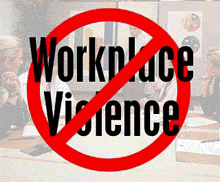
by cjxpadmin | Oct 2, 2013 | December 2013 Magazine
By Sheena Williams
Anger is a completely natural human emotion. However, it can quickly become destructive and get out of hand, if you are not careful. It can lead to loss of friends, relationships, and even your job. It taps into the more aggressive parts of your reactions, and it needs to be watched so that you don’t lose control. How often have you gotten angry with someone, then, later regretted saying the things that you said? Maybe you did something that you wish you hadn’t done in a moment of anger, and then, wish to take it back. Well, you can’t always take it back, and the best cure for the problem is prevention. Here are some things that you can do.
Express Your Angry Rationally
Anger is, at its core, an aggressive reaction to something that is wrong. Holding it in is not healthy, but neither is flying off the handle. Not all situations require doing harm or saying something hurtful. If you find that something is really bothering you about that person, meaning bothering you because of something that is affecting you directly, then, you should say something calmly. After you have said your peace, you need to let it go, or take the next step and go to a higher up. It is not your responsibility to crusade against Mandy for using up the paper clips and not putting new ones out. They may not even know it’s an issue. Just make sure that it is something that is your business. You being irritated because Jessica is wearing a red dress (and you hate the color red) is not a problem with her. It’s a problem with you.
flying off the handle. Not all situations require doing harm or saying something hurtful. If you find that something is really bothering you about that person, meaning bothering you because of something that is affecting you directly, then, you should say something calmly. After you have said your peace, you need to let it go, or take the next step and go to a higher up. It is not your responsibility to crusade against Mandy for using up the paper clips and not putting new ones out. They may not even know it’s an issue. Just make sure that it is something that is your business. You being irritated because Jessica is wearing a red dress (and you hate the color red) is not a problem with her. It’s a problem with you.
Relax
 I know it’s easier said then done, but sometimes taking a deep breath and counting to ten is the order of the day. Some people really don’t know that they are irritating. Silently repeat words and phrases such as: relax, calm down, or take it easy. Picture a relaxing place and just stay there for a minute. Breathe in deeply and release the anger when you exhale. Sitting down and taking a minute is another way to release the anger. It may sound like a lot of work, but when you weigh the time it takes to calm yourself down against saying or doing something you will regret forever, it isn’t much of a contest.
I know it’s easier said then done, but sometimes taking a deep breath and counting to ten is the order of the day. Some people really don’t know that they are irritating. Silently repeat words and phrases such as: relax, calm down, or take it easy. Picture a relaxing place and just stay there for a minute. Breathe in deeply and release the anger when you exhale. Sitting down and taking a minute is another way to release the anger. It may sound like a lot of work, but when you weigh the time it takes to calm yourself down against saying or doing something you will regret forever, it isn’t much of a contest.
Communication
Most of the time, the object of your anger doesn’t know that you are angry. You may think that the person you’re angry at is cognitively aware of every thought or feeling you have and they just simply are not. They are no more  aware of why you are angry than you are aware of the amount of people you’re making angry. You just never know. So when you see Mandy not replenishing the paper clips, just mention that the paper clips are in the drawer to the left. When she is using the last clip, she may think that the cleaning people re-fill the paper clips and not the office staff themselves.
aware of why you are angry than you are aware of the amount of people you’re making angry. You just never know. So when you see Mandy not replenishing the paper clips, just mention that the paper clips are in the drawer to the left. When she is using the last clip, she may think that the cleaning people re-fill the paper clips and not the office staff themselves.
Getting Over Yourself
Learn to recognize when you should be angry. Just because the day is not going your way or you’re not immediately getting what you want, that is not an excuse to let every curse word you know fly  out of your mouth. Recognize that there are other things going on around you. The world does not revolve around your day, and that sometimes the dog that has its day is not you. You will have your day, and it will be made even better because you’ve had time to get ready for it. People change, rules change, and plans change. It’s best to make peace with that and start working around it now.
out of your mouth. Recognize that there are other things going on around you. The world does not revolve around your day, and that sometimes the dog that has its day is not you. You will have your day, and it will be made even better because you’ve had time to get ready for it. People change, rules change, and plans change. It’s best to make peace with that and start working around it now.
Find A Solution
A lot of time anger comes from frustration. Stress is a silent killer that knows no age, race, creed or religion. It affects all of us differently, and the only known cure for distressing is to get rid of it. If you have a problem at work with getting something out timely, find out why. Once you can identify your stressors, then, you can begin working on it. Admitting that there is a problem is the first step to recovery.
Doing Something Constructive
If you find that when you get angry, the first thing you want to do is to swing at someone or shout at someone, then, it’s time to change your modus operandi of how you express your anger. Putting your hands on someone  without provocation is not acceptable at any time. Take a yoga class, or Tai Chi or just get some exercise. Instead of cussing, find more eloquent ways of expressing what it is you want to say. Try not to use words like forever or always. Nothing is forever, and nothing happens always or even all the time. Also avoid being passive-aggressive. You know who you are, being rude while smiling is still being rude!
without provocation is not acceptable at any time. Take a yoga class, or Tai Chi or just get some exercise. Instead of cussing, find more eloquent ways of expressing what it is you want to say. Try not to use words like forever or always. Nothing is forever, and nothing happens always or even all the time. Also avoid being passive-aggressive. You know who you are, being rude while smiling is still being rude!
Hopefully this article finds you well and happy. If you know someone who has severe anger issues, then, by all means, seek professional help. It could be a response to a deeper issue that meditation cannot fix. As always be safe and be happy! △

by cjxpadmin | Oct 2, 2013 | This Issue's FEATURE
By Sheena Williams
When you hear about violence in the news, it’s usually out in the streets or some far away country in an area that has nothing to do with you directly. Even if it’s closer to home, it’s always some other person who was abused by their spouse or someone else’s child getting picked on at school. No one ever thinks that it can happen to you, but it can. It can happen in some of the least likely places like your place of employment.
Workplace violence is any act or threat of physical violence, harassment, intimidation, or other threatening disruptive behavior that occurs at your place of business. It can be anything from threats and verbal abuse to physical assaults and even homicide. It can involve employees, clients, customers and visitors. Most people are not expecting it, and so, are unprepared for when it happens. Thousands of incidents of workplace violence take place every year and those are just the ones reported. There will never be a true count of how much goes on because so many cases go unreported every year. Here are some ways to reduce the risk of workplace violence for yourself and others.
Zero Tolerance of Workplace Violence
If you take the issue seriously from the start, then, there are less likely to be occurrences of it happening in the first place. See what your job’s policies are on violence in the workplace and see how they are treated and/or enforced. These policies should not only cover those who work there, but those who come inside as customers, clients, vendors, or just persons off the street. If you see that your job does not have a workforce violence program, see about starting one.
Be Aware of Your Surroundings
One of the dangers of being in your workplace when violence happens is that you are prepared for it. No one thinks that when they walk into their cubicle, workstation, or company bathroom that something is going to happen to them. Don’t walk around being paranoid, but always take stock of where you are. Note who is around you and what people are doing close to you. The easiest way to do this without causing a fuss is to say hello to people as you go by. It lets everyone know that you’re acknowledging them and that you see him or her without making a big deal about it.
Don’t Feed Into the Drama
Sometimes, a simple argument between employees can spiral out of control. Some might laugh at an argument starting over an individual running out of something innocent like post its, but when you work in a high stress environment, things can escalate very quickly. You don’t really know what is going to set someone off. Learn to know when a situation is going to get out of hand, and then, either avoid it or try to diffuse it. If you see two co-workers arguing, don’t jump into it. If you see someone getting hurt, if at all possible, call security prior to stepping in.
Documentation
 If you notice something of real concern, you should always alert your supervisor. Please make note of real concern. Your supervisor is going to become agitated if you report on Cindy having a nail file at the office, and everyone knows she does her nails at her desk on Thursdays while on the phone. If you see someone exhibiting seriously bad behavior that makes you feel uncomfortable, then, by all means, let your supervisor know that something is going on. You know when a situation is not right. It’s best to do it in writing, if at all possible, because you will have a date and time the issue was addressed.
If you notice something of real concern, you should always alert your supervisor. Please make note of real concern. Your supervisor is going to become agitated if you report on Cindy having a nail file at the office, and everyone knows she does her nails at her desk on Thursdays while on the phone. If you see someone exhibiting seriously bad behavior that makes you feel uncomfortable, then, by all means, let your supervisor know that something is going on. You know when a situation is not right. It’s best to do it in writing, if at all possible, because you will have a date and time the issue was addressed.
OSHA and YOU
 Make sure that your workplace has information available and posted for those coming in and out of the workplace. OSHA creates many pamphlets, brochures, and handouts that your office can secure at no cost regarding Occupational Safety and Health. They also offer different stress handling classes or safety awareness seminars throughout the year. If you ever have any questions regarding these policies, see the following information:
Make sure that your workplace has information available and posted for those coming in and out of the workplace. OSHA creates many pamphlets, brochures, and handouts that your office can secure at no cost regarding Occupational Safety and Health. They also offer different stress handling classes or safety awareness seminars throughout the year. If you ever have any questions regarding these policies, see the following information:
For a free copy of OSHA publications, send a self-addressed mailing label to this address:
OSHA Publications Office
P.O. Box 37535
Washington, DC 20013-7535
Or, send a request to fax number (202) 693-2498, or call (202) 693-1888.
To file a complaint by telephone, report an emergency, or get OSHA advice, assistance or products, contact your nearest OSHA office under the “U.S. Department of Labor” listing in your phone book, or call toll-free at:
(800) 321-OSHA (6742)
Tele-Typewriter (TTY) Number (877) 889-5627
To file a complaint online or obtain more information on OSHA federal and state programs, visit OSHA’s website.
In the end nothing can guarantee that you will not be a victim of Workforce violence, but hopefully these steps have given you ways to minimize the threat to yourselves and those around you. △

 flying off the handle. Not all situations require doing harm or saying something hurtful. If you find that something is really bothering you about that person, meaning bothering you because of something that is affecting you directly, then, you should say something calmly. After you have said your peace, you need to let it go, or take the next step and go to a higher up. It is not your responsibility to crusade against Mandy for using up the paper clips and not putting new ones out. They may not even know it’s an issue. Just make sure that it is something that is your business. You being irritated because Jessica is wearing a red dress (and you hate the color red) is not a problem with her. It’s a problem with you.
flying off the handle. Not all situations require doing harm or saying something hurtful. If you find that something is really bothering you about that person, meaning bothering you because of something that is affecting you directly, then, you should say something calmly. After you have said your peace, you need to let it go, or take the next step and go to a higher up. It is not your responsibility to crusade against Mandy for using up the paper clips and not putting new ones out. They may not even know it’s an issue. Just make sure that it is something that is your business. You being irritated because Jessica is wearing a red dress (and you hate the color red) is not a problem with her. It’s a problem with you. I know it’s easier said then done, but sometimes taking a deep breath and counting to ten is the order of the day. Some people really don’t know that they are irritating. Silently repeat words and phrases such as: relax, calm down, or take it easy. Picture a relaxing place and just stay there for a minute. Breathe in deeply and release the anger when you exhale. Sitting down and taking a minute is another way to release the anger. It may sound like a lot of work, but when you weigh the time it takes to calm yourself down against saying or doing something you will regret forever, it isn’t much of a contest.
I know it’s easier said then done, but sometimes taking a deep breath and counting to ten is the order of the day. Some people really don’t know that they are irritating. Silently repeat words and phrases such as: relax, calm down, or take it easy. Picture a relaxing place and just stay there for a minute. Breathe in deeply and release the anger when you exhale. Sitting down and taking a minute is another way to release the anger. It may sound like a lot of work, but when you weigh the time it takes to calm yourself down against saying or doing something you will regret forever, it isn’t much of a contest. aware of why you are angry than you are aware of the amount of people you’re making angry. You just never know. So when you see Mandy not replenishing the paper clips, just mention that the paper clips are in the drawer to the left. When she is using the last clip, she may think that the cleaning people re-fill the paper clips and not the office staff themselves.
aware of why you are angry than you are aware of the amount of people you’re making angry. You just never know. So when you see Mandy not replenishing the paper clips, just mention that the paper clips are in the drawer to the left. When she is using the last clip, she may think that the cleaning people re-fill the paper clips and not the office staff themselves. out of your mouth. Recognize that there are other things going on around you. The world does not revolve around your day, and that sometimes the dog that has its day is not you. You will have your day, and it will be made even better because you’ve had time to get ready for it. People change, rules change, and plans change. It’s best to make peace with that and start working around it now.
out of your mouth. Recognize that there are other things going on around you. The world does not revolve around your day, and that sometimes the dog that has its day is not you. You will have your day, and it will be made even better because you’ve had time to get ready for it. People change, rules change, and plans change. It’s best to make peace with that and start working around it now. without provocation is not acceptable at any time. Take a yoga class, or Tai Chi or just get some exercise. Instead of cussing, find more eloquent ways of expressing what it is you want to say. Try not to use words like forever or always. Nothing is forever, and nothing happens always or even all the time. Also avoid being passive-aggressive. You know who you are, being rude while smiling is still being rude!
without provocation is not acceptable at any time. Take a yoga class, or Tai Chi or just get some exercise. Instead of cussing, find more eloquent ways of expressing what it is you want to say. Try not to use words like forever or always. Nothing is forever, and nothing happens always or even all the time. Also avoid being passive-aggressive. You know who you are, being rude while smiling is still being rude!


 If you notice something of real concern, you should always alert your supervisor. Please make note of real concern. Your supervisor is going to become agitated if you report on Cindy having a nail file at the office, and everyone knows she does her nails at her desk on Thursdays while on the phone. If you see someone exhibiting seriously bad behavior that makes you feel uncomfortable, then, by all means, let your supervisor know that something is going on. You know when a situation is not right. It’s best to do it in writing, if at all possible, because you will have a date and time the issue was addressed.
If you notice something of real concern, you should always alert your supervisor. Please make note of real concern. Your supervisor is going to become agitated if you report on Cindy having a nail file at the office, and everyone knows she does her nails at her desk on Thursdays while on the phone. If you see someone exhibiting seriously bad behavior that makes you feel uncomfortable, then, by all means, let your supervisor know that something is going on. You know when a situation is not right. It’s best to do it in writing, if at all possible, because you will have a date and time the issue was addressed. Make sure that your workplace has information available and posted for those coming in and out of the workplace. OSHA creates many pamphlets, brochures, and handouts that your office can secure at no cost regarding Occupational Safety and Health. They also offer different stress handling classes or safety awareness seminars throughout the year. If you ever have any questions regarding these policies, see the following information:
Make sure that your workplace has information available and posted for those coming in and out of the workplace. OSHA creates many pamphlets, brochures, and handouts that your office can secure at no cost regarding Occupational Safety and Health. They also offer different stress handling classes or safety awareness seminars throughout the year. If you ever have any questions regarding these policies, see the following information: